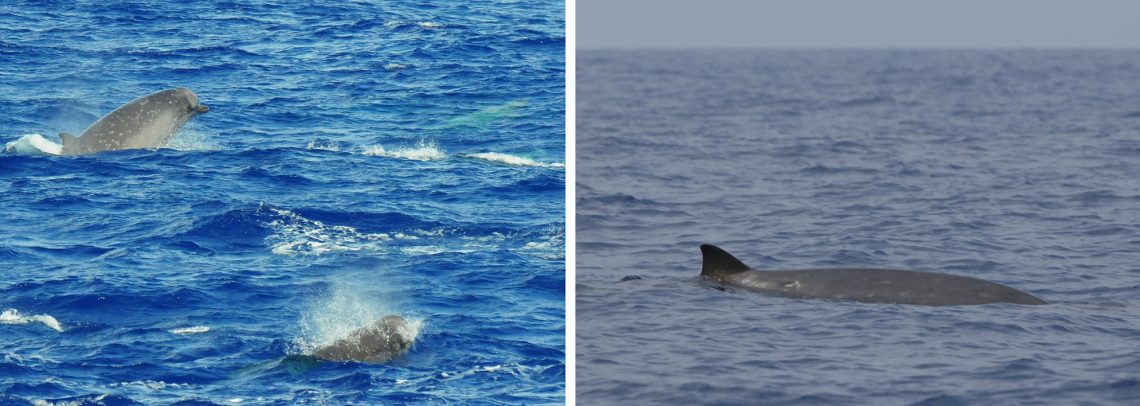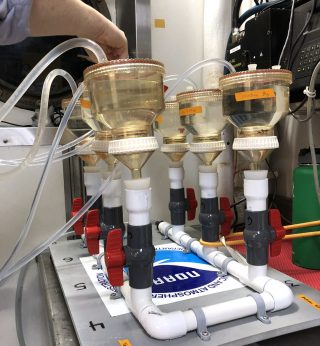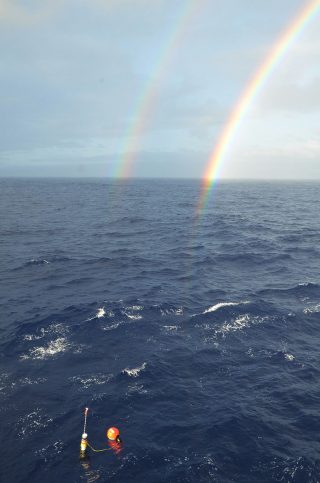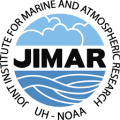There are several species of whales that are particularly challenging to study, including four species of beaked whales and two populations of false killer whales around the main Hawaiian Islands.
Data on the population and behavior of these species is important in accurately assessing their status and the potential impacts of increasing human activity. However, study of both beaked whales and false killer whales is limited by their rare nature. To overcome these challenges, NOAA National Marine Fisheries Service, Pacific Islands Fisheries Science Center (PIFSC), and the Cetacean Research Program (CRP) have been pioneering new techniques to better assess the status of these species. By using cutting-edge technology to listen for and gather traces of these mysterious giants, researchers hope to drastically increase the small amount known about these enigmatic creatures.

Rare Encounters
Researchers have called beaked whales: “The least understood group of large mammals on Earth.” These whales are amazingly elusive: they conduct extremely deep dives and spend very little time at the water’s surface. Although the size of an elephant, some species have never been seen alive. For example, one species in Hawaiian waters – the Cross Seamount beaked whale – has only been identified by its vocalizations.
Two populations of false killer whales can be found around the main Hawaiian Islands, an insular population resident to the islands and a more broadly distributed pelagic population that occasionally visits the islands. The insular population numbers less than 200 individuals and is listed as endangered under the U.S. Endangered Species Act. Both populations are threatened by interactions with fisheries and are the focus of ongoing management efforts by NOAA Fisheries.

Fact-Finding Methods
The team will use a combination of environmental DNA (eDNA) and passive acoustic techniques. The data provided by these approaches will begin to fill data gaps that are crucial to accurate population assessment and feed into future survey efforts. eDNA is DNA from animal cells that is collected from the environment rather than directly sampled from an individual organism. Gathering and understanding eDNA from water samples collected near a whale sighting could greatly increase the success rate of genetic sampling.
The team will deploy three Drifting Acoustic Spar Buoy Recorders (DASBRs) at locations of known beaked whale occurrence off the west coast of Oahu and the southeastern coast of Maui. DASBRs are free drifting vertical acoustic recording arrays that measure whale vocalizations. While the array is drifting the team will conduct CTD casts to collect water samples for eDNA analysis and associate the genetic information with any acoustic detection of beaked whales.

During the operations, scientists will watch for false killer whales. If a group is sighted, the team will deploy a small boat to collect photo ID, eDNA and biopsy samples to gather information on group composition and numbers.
The combination of this data will allow NOAA to better understand the movement and make-up of these mysterious whale species. Little is known about the Hawaiian Islands beaked whale populations and the potential impacts of increasing human activity in the area on their populations. Accurate population assessments are crucial in order to assess the maximum level of human‐caused mortality that is sustainable for these populations.


